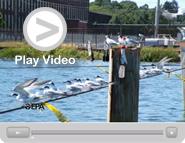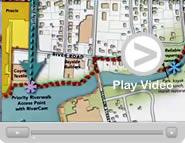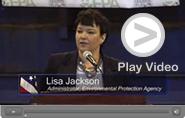Harbor Cleanup
You will need Adobe Reader to view some of the files on this page. See EPA’s About PDF page to learn more.
On this page:
- Why is EPA cleaning up the harbor?
- What's being done about the pollution?
- How much longer will this cleanup take?
Why is EPA cleaning up the harbor?
A busy commercial seaport, New Bedford Harbor works to support its surrounding communities as it did through the whaling and industrial times, but the harbor environment struggles from a more recent past of electrical device production which caused it to be one of EPA's largest Superfund cleanup sites.
The harbor is an 18,000-acre urban estuary with sediment highly contaminated with polychlorinated biphenyls (PCBs) and heavy metals. From the 1940s until EPA banned the production of PCBs in the 1970s, two manufacturing facilities improperly disposed of industrial wastes containing PCBs, contaminating the harbor bottom for about six miles from the Acushnet River into Buzzards Bay. The harbor was placed on EPA's National Priorities List in 1982, and continues to require significant time and funding to clean up.
After extensive testing of water quality, harbor sediment, air quality and locally caught fish and shellfish, it was clear that the PCBs in the sediment posed a serious risk to human health and the environment. PCBs do not break down easily in the natural environment, and left untouched, continue to pose a risk within the local food chain.
EPA's greatest concern is the possibility of people eating contaminated locally caught seafood. The build-up of PCB levels within the marine life has resulted in restrictions on fishing, shellfishing and lobstering in and around the harbor. These will remain in place until PCB levels decrease. Annual seafood data is collected to ensure that the current restrictions protect human health. Learn more about PCBs.
What's being done about the pollution?
2011 marks EPA's eighth season of hydraulic dredging in New Bedford Harbor. Prior to the start of the full-scale hydraulic dredging and filtration in 2004, EPA and the Army Corps of Engineers performed multiple targeted cleanup actions within the harbor and along the shoreline that removed some of the highest levels of PCB contamination, known as "Hot Spot" areas.
Just over 200,000 of the total of about 900,000 cubic yards (PDF) (1 pg, 356 K) of PCB-contaminated sediment has been addressed as required by the 1998 cleanup plan. EPA has focused on a "worst first" cleanup strategy and much of the contamination that remains is lower in PCB levels than what has been removed.
The current cleanup process removes contaminated sediment from the harbor bottom by a vacuum-like network of dredges, pipelines and processing facilities. Learn more about the cleanup process.
How much longer will this cleanup take?
EPA is working tirelessly to return the New Bedford Harbor environment to a healthy state once again. Before the settlement was finalized, the cleanup timeline was estimated to take another 30-40 years, a worst case scenario that no one found acceptable. With the finalization of the settlement, EPA estimates the cleanup timeline to be 5-7 years.




